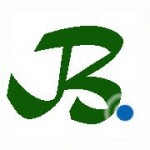We demontrated what is DNS Changer Virus/ Malware and How to determine if your Computer is infected to DNS Changer Malware, it is the time to demonstrate how to Fix a Computer affected with DNS Changer Malware.
If you donot know Technicalities of the matter, its advisable not to proceed but call an expert and get it fixed. However, if you understand what you are doing then you can definitely go ahead
Step 1 The first thing you want to do is make a backup of all of your important files. You might go to a computer store or shop online for a portable hard drive and copy all of your files onto that drive.
Step 2 Either you or a computer professional that you rely upon and trust should follow the “self help†malware clean up guides listed below. The goal is to remove the malware and recover your PC from the control of the criminals that distributed it. If you were already thinking of upgrading to a new computer, now may be a good time to make the switch.
Step 3 Once you have a clean PC, follow instructions for ensuring that your DNS settings are correct. If you’re not using a new PC, you’ll want to check that your computer’s DNS settings are not still using the DNS Changer DNS servers. We hope to have some of our own instructions soon. Until then, the instructions and screen shots found in step 2 at http://opendns.com/dns-changer are quite good if you want to manually set your DNS settings. You also have the option to return to using your ISP-provided automatic settings by choosing the “automatically†option (Windows) or deleting any DNS servers listed (MacOS).
Step 4 After you have fixed your computer, you will want to look at any home router you’re using and make sure they automatically use DNS settings provided by the ISP. We’ll have a document for this soon.
Step 5Â Changing DNS is only one of the functions of the malware kits. The malware could have been used for capturing keystrokes or acting as a proxy for traffic to sensitive sites like bank accounts or social media. It would be a good idea to check your bank statements and credit reports as well as change passwords on any online accounts especially saved passwords from your applications or web browsers.
How can you fix, remove, and recover from a DNS Changer Violation?
Please take immediate steps to safe guard your computer and data if any of the test indicate that you might be violated with DNS Changer. If the Check-Up Site indicates that you are affected then either follow the instructions on that site or run one of the following free tools listed below to remove DNSChanger and related threats:
| Name of the Tool | URL |
| Hitman Pro (32bit and 64bit versions) | http://www.surfright.nl/en/products/ |
| Kaspersky Labs TDSSKiller | http://support.kaspersky.com/faq/?qid=208283363 |
| McAfee Stinger | http://www.mcafee.com/us/downloads/free-tools/stinger.aspx |
| Microsoft Windows Defender Offline | http://windows.microsoft.com/en-US/windows/what-is-windows-defender-offline |
| Microsoft Safety Scanner | http://www.microsoft.com/security/scanner/en-us/default.aspx |
| Norton Power Eraser | http://security.symantec.com/nbrt/npe.aspx |
| Trend Micro Housecall | http://housecall.trendmicro.com |
| MacScan | http://macscan.securemac.com/ |
| Avira | http://www.avira.com/en/support-for-home-knowledgebase-detail/kbid/1199 Avira’s DNS Repair-Tool |
How can I use these tools to clean my computer?
Each of these tools has instructions for their use. BUT, the best recommendation is to use one of the proven “self help†malware clean up guides – using several tools to insure you clean all the infections from your computer. Most malware will disable your software and anti-virus updates. The procedures below address that problem, using several tools to remove the blocks, remove the malware, and then update your computer.
| Guide | How to Use | Language |
| Microsoft’s Safety and Security Center | Microsoft’s authoritative portal for all their security guidance, tools, and capabilities. | English |
| Apple’s Security Page with pointers to keep your MAC safe | Scroll down to the section on “Checking Security in your System.” This has the pointers to insure your MAC is as secure as possible. | English |
| DSL Report’s Security Cleanup FAQ | A community driven self help guide to fix malware problems on your systems. | English |
| Andrew K’s Malware Removal Guide | Andrew K is an individual who share’s his experience on-line. This guide is an often referenced guide to remediate malware problems on a computer. | English |
| Public Safety Canada’a Malware Infection Recovery Guide | The Canadian Public Safety office (publicsafety.gc.ca) has a malware removal guide updated and focused to help the general population. | English |
| Australia’s Stay Smart Online Factsheet to help Remove Malware | Stay Smart Online Factsheet 11, Part 1 – You suspect your computer is infected with malicious software – what should I do? | English |
